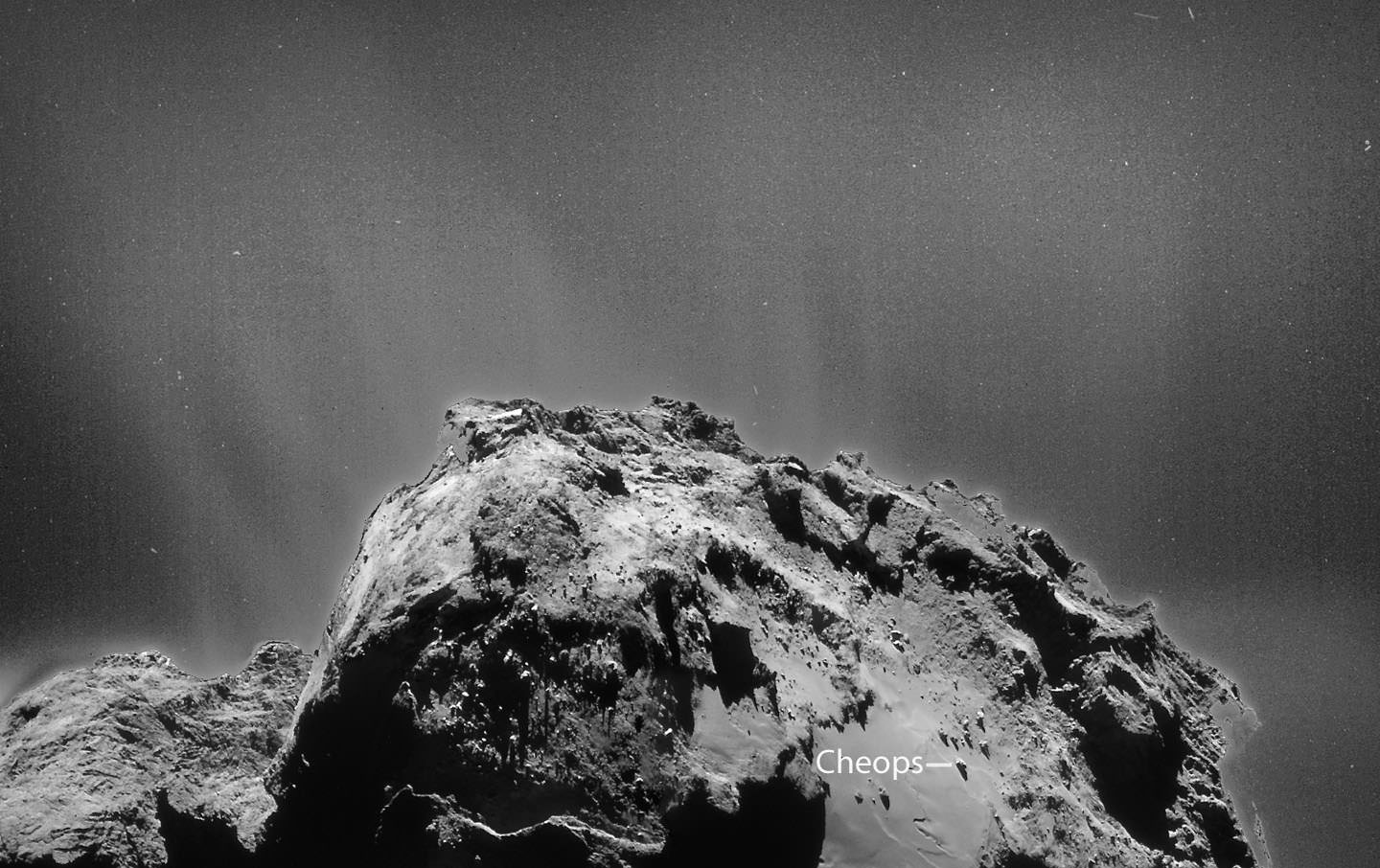Anyone who’s ever read a Charlie Brown comic strip knows “Pig-Pen”, the lovable boy who walks around in a constant cloud of his own dirt and dust. Every time he sighs, dust rises in a little cloud around him. Why bother to bathe? There’s dignity in debris, which “Pig-Pen refers to as the “dust of countless ages”. Comets shuffle around the Sun surrounded by a similar cloud of grime that’s as old as the Solar System itself.
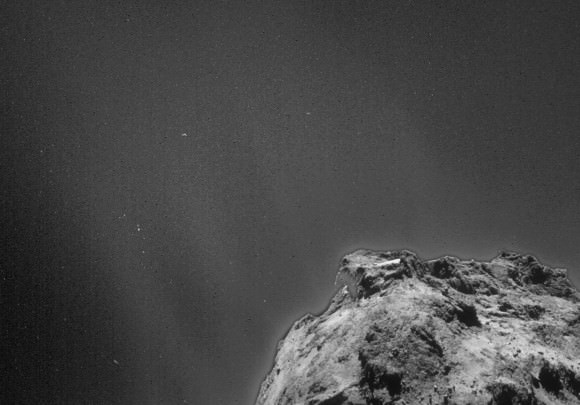
You’ve probably noticed little flecks and streaks in photos returned by the Rosetta spacecraft in the blackness of space surrounding comet 67P/Churyumov-Gerasimenko. After a recent year-end break, the Rosetta team has returned with new updates on the comet including a series of four images recently released as a mosaic. The pictures were processed to highlight surface features; the space around the nucleus is black in comparison. But if we take a closer look at what first appears void, we soon discover it’s not empty at all.
In photos taken January 3rd, the writer of ESA’s Rosetta blog notes that “some of the streaks and specks seen around the nucleus will likely be dust grains ejected from the comet, captured in the 4.3 second exposure time.”
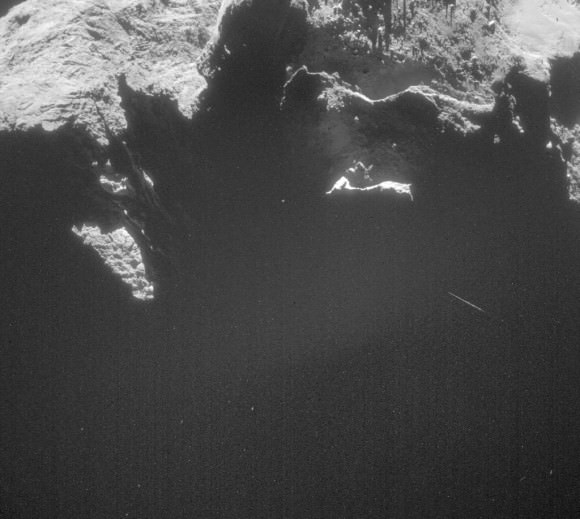
Using an image-editing tool like Photoshop, we can hold back the glare of the nucleus and “open up” the shadows around the comet. Jets of dust released by vaporizing ice are the most obvious features to emerge. The soft, low-contrast plumes plow into the vacuum around the nucleus wrapping it in a silky cocoon of gas and dust – a tenuous atmosphere that reflects sunlight far more weakly than the comet itself.
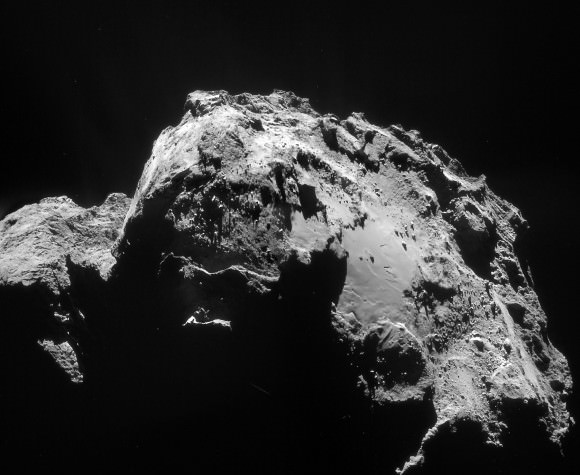
While staring at dust spots may not produce the same magical feelings as watching a sunrise, it’s fascinating nonetheless to contemplate what we’re seeing. If you’ve been struck by the beauty of a comet’s meteor-like head trailing a wispy tail, you’re looking at what countless individual grains of dust can do when sculpted by the master hand of the Sun. Perusing images of 67P, we see the process in its infancy as individual grains and small clots are released into space to be fashioned into something grander.
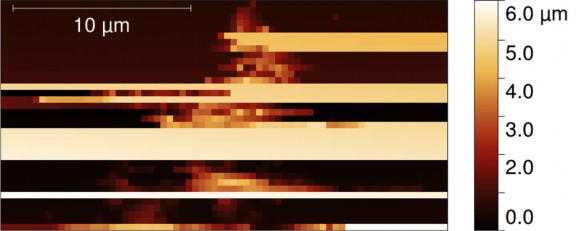
Rosetta’s Micro-Imaging Dust Analysis System or MIDAS measures the rate at which dust sweeps past the spacecraft and its size distribution. MIDAS catches dust grains by exposing a sticky target surface into space and waiting for a mote to drift by. It snatched its first one last November – a larger than expected mote measuring about 1/100 of a millimeter across with a complex shape and fluffy texture.
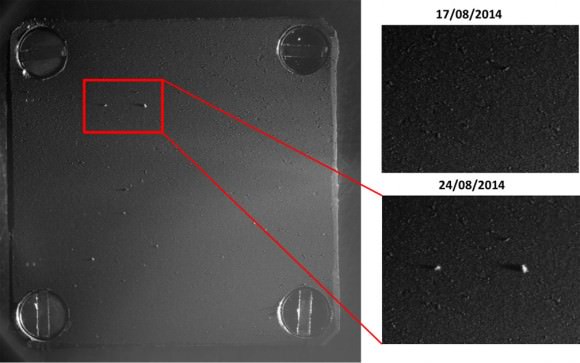
Credit: ESA/Rosetta/MPS for COSIMA Team MPS/CSNSM/UNIBW/TUORLA/IWF/IAS/ESA/
BUW/MPE/LPC2E/LCM/FMI/UTU/LISA/UOFC/vH&S
Analysis of the composition of another dust grain named “Boris” made by the COSIMA instrument has identified sodium and magnesium. Magnesium is no surprise as 95% of known minerals observed in comets resemble olivine and pyroxenes, common in meteorites and in the upper mantle of the Earth. Sodium has also been seen before in comas and tails, and originates in dust grains, but its mineral source remains uncertain.
As we might study the makeup of the dust Pig-Pen leaves in his wake to identify traces of earthly dirt, micro-organisms, pollen, pollution, and even recent volcanic eruptions, so we examine each mote that sprays Rosetta’s way, looking for clues to the origin of the planets and Solar System.

